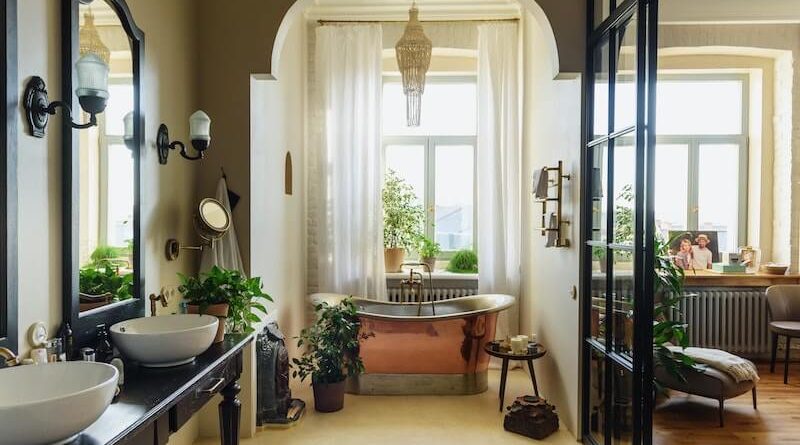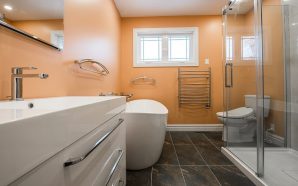If you’re thinking about adding a bathroom to your basement, you’ve come to the right place! Adding a bathroom to the basement of your home can be a great way to increase the value of your home and provide more convenience for your family. Before taking the plunge and adding a bathroom, consider some important things. In this blog post, we’ll discuss everything you need to know before adding a bathroom to your basement, from budgeting to plumbing concerns. Read on to learn more!
Cost and value
Before embarking on this project, it’s important to consider the costs and potential return on investment. First, you’ll need to consider the cost of materials and labor. Adding a bathroom to your basement can add value to your home, but it can also come with a hefty price tag. The cost can vary depending on the project’s complexity, the bathroom’s size, and the materials used. You may also need to factor in the cost of any permits or inspections required by your local government.
Secondly, it’s important to consider the potential return on investment. A basement bathroom can add value to your home, especially if it’s the only bathroom on that level. However, it’s important to remember that the return on investment may take time and can vary based on the location and condition of your home. Overall, it’s important to carefully consider the cost and potential return on investment before adding a bathroom to your basement. By doing so, you can make an informed decision that benefits both you and your home’s value.
Plumbing
One of the most important things to consider before adding a bathroom to your basement is the plumbing. Depending on your current plumbing system, you may need to install or connect new pipes to the existing ones. If your basement has no existing plumbing, you must factor in the cost of installing new plumbing pipes. This can be costly and time-consuming, as it may require breaking up the floor to access the main sewer line.
It’s also important to ensure that your plumbing system can handle the increased water usage of a bathroom. The last thing you want is for your basement bathroom to cause problems for your entire plumbing system. If you plan on adding a shower or bathtub, you must ensure that your plumbing system can handle the additional drainage. This may require the installation of a larger or separate drainage line. You must ensure that your basement bathroom has a proper venting system to prevent sewer gases from backing up into your home. This is a critical safety feature that you should pay attention to.
Before adding a bathroom to your basement, evaluating your current plumbing system and making any necessary updates to accommodate the increased water usage is essential. Consider working with a licensed plumber to ensure your new bathroom meets all the required safety and plumbing code requirements.
Ventilation
Ventilation is important to consider before adding a bathroom to your basement. Proper ventilation helps prevent moisture buildup, leading to mold and mildew growth. In addition, ventilation ensures that unpleasant bathroom odors do not linger in the basement.
When adding a bathroom to your basement, you have several ventilation options. One standard option is a ceiling exhaust fan, which removes moisture and odors from the bathroom. Alternatively, you can install a wall-mounted vent fan or a combination of ceiling and wall ventilation.
It is important to ensure that the ventilation system you choose is adequate for the size of your bathroom and that it complies with local building codes. You should also consider the fan’s noise level, especially if the bathroom will be located near the living areas in your home. In addition to proper ventilation, ensuring your basement has adequate natural ventilation is important. This means ensuring that windows or other openings allow fresh air to circulate. Natural ventilation is especially important if your basement bathroom will not have a shower or tub, as these fixtures generate more moisture than sinks and toilets alone.
Proper ventilation is a crucial component of any basement bathroom renovation project. Be sure to consult with a professional to ensure that your ventilation system is properly designed and installed.
Sound Proofing
Soundproofing is an important aspect to consider before adding a bathroom to your basement. You want to ensure that any noise from the bathroom, such as running water or flushing toilets, is not audible throughout the house. Installing insulation in the walls and ceiling is one way to soundproof a bathroom. This can help reduce the noise that travels through the walls and into other house areas. Consider using soundproof drywall or installing a soundproof door to reduce noise.
Another consideration is the type of flooring you choose. Hard surface floorings like tile or hardwood can reflect sound and create more noise. Consider using carpet or other soft flooring options to help absorb sound and decrease noise levels.
It’s important to note that soundproofing a bathroom can be a more costly investment, but it can also add value to your home and improve the overall living experience for you and your family.
Heating and cooling
When planning to add a bathroom to your basement, it is important to consider the heating and cooling needs. Since the basement is usually colder than other parts of the house, you may need to install a heating system to make it comfortable during winter. You can choose between electric heaters, radiant floor heating, or installing ductwork connected to your home’s central heating system.
Additionally, if you add a shower or a bathtub to your basement bathroom, consider a ventilation system with a fan to prevent mold and mildew growth. A ventilation fan can also help circulate air and keep the room fresh and clean. Regarding cooling, consider an air conditioning system if you live in an area with hot summers. Depending on your preferences, you can install a ductless mini-split system, a window AC unit, or extend your home’s central air conditioning system to include your basement.
Remember that the cost of installing a heating and cooling system can vary depending on the type of system you choose and the size of your basement. It is important to consult with a professional contractor to determine the best option for your needs and budget. Adding a bathroom to your basement can be an excellent investment for your home, but it’s important to consider all the factors before diving in. Many things must be considered to ensure a successful project, from cost and value to plumbing, ventilation, soundproofing, heating, and cooling.
One key decision to make is what type of vanity to install. 36-inch vanities are a popular basement choice due to their space-saving size and ability to fit in tight spaces. However, measure your space carefully before purchasing a vanity to ensure it will fit properly.
When planning your basement bathroom project, working with professionals who can help guide you through the process and ensure everything is done correctly is important. With careful planning and attention to detail, you can create a beautiful and functional bathroom in your basement that adds value to your home.









